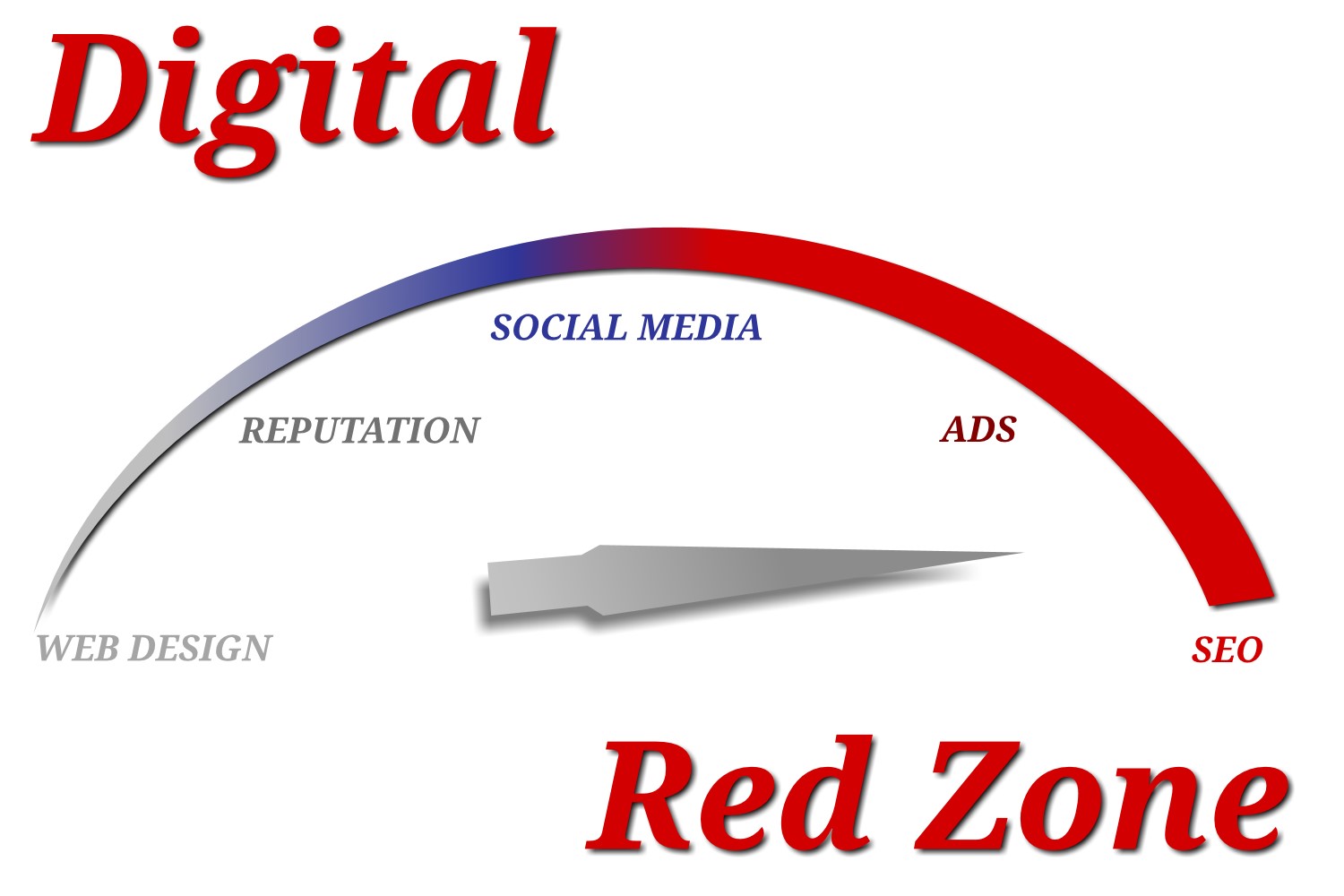The Secret social media marketing data Every Marketer Needs

Did you know that over 4.7 billion people are active on social media platforms, spending an average of 2 hours and 31 minutes on networks each day? That’s not just astonishing—it’s a data goldmine. As the digital landscape shifts, social media marketing data has become the backbone of every smart marketing strategy, driving decisions that boost engagement, ROI, and brand loyalty like never before. Let’s dive deep into the essential insights that every marketer, whether seasoned or new to the game, must understand to excel in this dynamic field.

Why Social Media Marketing Data Is Reshaping the Media Landscape
In modern marketing, social media marketing data is fundamentally changing how brands connect with audiences. With every like, comment, and share, brands collect actionable insights that can steer their marketing strategy across every media platform . Smart marketers use this media data to fine-tune messaging, design interactive campaigns, and track their brand’s presence in a crowded media market in real time.
It’s no longer enough to simply push content and hope for the best. Social media data enables brands to discover what truly resonates with specific age groups of social media users , how media usage shifts between channels, and which tactics lead to greater media ad success. In many ways, the power to decode and apply this data is rapidly setting industry leaders apart from their competition—a trend likely to intensify as marketing statistics become even more granular and predictive.
The Role of Social Media Data in Modern Media Marketing
Today’s media marketing landscape thrives on data-driven decisions. Every social interaction—be it a click, share, or comment—generates a new data point, providing rich feedback for brands. Social media data helps marketers measure what content works, which projects fail to connect, and where new opportunities for audience engagement exist. Companies that utilize this information maximize their advertising investments and increase their market share by making precision-driven choices about their social media ad placements and campaign content.
By combining multiple data streams from various social media platforms , leading brands can target messages more accurately, segment audiences, and define high-value media users . Advanced marketing statistics empower companies to allocate resources more effectively and drive real business results.
Examining the Latest Marketing Statistics That Drive Social Media Strategy
Staying updated with the most recent marketing statistics is crucial for forming a winning social media marketing strategy. For example, platforms like Sprout Social and Hootsuite release frequent benchmark studies highlighting engagement rates, monthly active users , and content trends for each major social channel. These statistics reveal shifts in audience behavior—showing, for example, that video content receives 1200% more shares than text and image posts combined, or that Gen Z drives a 21% higher interaction rate on Instagram than any other age group .
Knowing these statistics enables brands to focus efforts where they’ll get the best results, creating tailored content and more effective media advertising campaigns. Adaptability and data literacy, therefore, are essential qualities for every ambitious digital marketer.

Useful Social Media Data You Might Be Overlooking
Many marketers focus solely on surface-level metrics such as likes and shares. However, the most valuable insights sometimes come from less obvious media data points. Metrics like social share of voice , sentiment analysis, and audience dwell time on posts can reveal underlying brand perception and predict future engagement trends in the media market .
Diving deeper, it pays to monitor click path analysis, the sources of your media users (referral traffic), and cross-platform user journeys. Platforms and tools like Sprout Social empower businesses to uncover these hidden gems, transforming a routine social media audit into a treasure trove for smarter media advertising spend and campaign optimization.
What You’ll Discover in This Social Media Marketing Data Guide
- Understand core metrics from social media data for actionable marketing insights
- Learn how to leverage media data for engaging social network campaigns
- Explore the value of media advertising and social media ad performance
- Analyze the media market using reliable marketing statistics
- Master best practices for interpreting data from various social media platforms and media platforms
Crucial Social Media Marketing Data: Numbers Every Marketer Should Track
To craft a winning marketing strategy , it’s vital to focus on the right social media marketing data . High-performing marketers don’t just look at basic engagement—they dig into platform benchmarks, industry-specific performance standards, active user trends, and conversion rates unique to every channel. This holistic view helps companies across every media platform stay ahead in an increasingly competitive media market .
Tracking these numbers not only shows media usage patterns, but also spotlights shifts in social media usage by age group , time of day, and type of content consumed, making campaign tweaks more effective and timely for every media user .
Engagement Rates Across Social Media Platforms: A Media Marketing Perspective
Engagement rates are one of the clearest indicators of audience interest and a cornerstone of media marketing success. Each social media platform sets distinct benchmarks, shaped by industry, audience behavior, and media usage trends. For instance, Instagram boasts a higher average engagement rate thanks to its visual format, while platforms like Twitter often see shorter, more time-sensitive interactions. By analyzing your engagement metrics against up-to-date marketing statistics and peer benchmarks, you reveal whether your content and media ad spend are truly moving the needle.
Constantly comparing across platforms—Facebook, Instagram, LinkedIn, TikTok—enables brands to pinpoint which channels yield the highest ROI for their vertical. Smart marketers analyze patterns by age group and engagement type, adjusting strategy to maximize content resonance and overall social media marketing performance.
| Platform | Engagement Rate | Benchmark Source | Industry Example |
|---|---|---|---|
| 1.22% | Sprout Social | Fashion & Lifestyle | |
| 0.08% | Hootsuite | Retail | |
| 0.54% | Statista | Professional Services | |
| TikTok | 5.96% | Emarketer | Entertainment |

Key Social Media Usage Trends from the Latest Marketing Statistics
Recent marketing statistics confirm that consumption habits are shifting fast in the social media market . Notably, short-form video content dominates engagement, and platforms like TikTok and Instagram Reels fuel a surge in monthly active users among younger age groups . On the other hand, Facebook remains strong for reaching older demographics, while LinkedIn emerges as the go-to platform for B2B media marketing and high-value professional active users .
Another critical trend is the growing emphasis on privacy and data control, influencing how media users interact with ads and organic content. Staying up-to-date on such usage shifts ensures that brands continuously adapt their media advertising campaigns to reach users where they are, not where they used to be.
Analyzing Audience Age Groups and Their Social Media Usage Patterns
Effective social media marketing requires laser-focused audience segmentation, especially by age group . Gen Z and Millennials flock to TikTok and Instagram, drawn by creative content and influencer culture. In contrast, Baby Boomers and Gen X find comfort in Facebook, appreciating community groups and event-driven features. These patterns are crucial for brands as messaging, tone, and media format must be tailored for each segment to drive engagement and conversion.
Diving into social analytics, smart marketers interpret not just where media users congregate, but when, and with what types of content. This can mean the difference between a viral campaign and a forgettable post.
How to Collect, Analyze, and Interpret Social Media Marketing Data

Best Tools and Platforms for Social Media Data Collection
Success with social media marketing begins with the right tools. Leading solutions like Sprout Social , Hootsuite, and Buffer provide comprehensive analytics dashboards, consolidating media data from multiple channels. These platforms allow marketers to monitor real-time media usage , audience growth, and media ad performance, all in one place. By leveraging such integrated systems, marketers reduce manual reporting and gain instant access to actionable insights for their campaigns.
More specialized platforms—Brandwatch, Google Analytics, and Socialbakers—can dig deeper, capturing nuanced metrics such as sentiment, content virality, and share of voice. Investing in the right analytics suite ensures marketers remain agile in the fast-paced social media market .
Step-by-Step: Turning Raw Social Media Data Into Sharable Marketing Insights
The path from data collection to meaningful insight involves six core steps. First, decide on your primary business goals and align them with measurable marketing statistics . Next, gather raw media data from platforms and third-party tools. Then clean and organize your data, ensuring accuracy and relevance.
After data preparation comes analysis—spot trends, outliers, and patterns across media platforms . Visualize results with charts and dashboards, highlighting key findings for your team or stakeholders. Finally, transform insights into actionable decisions for future media advertising campaigns or posts. Document lessons learned and reevaluate regularly for continuous growth in your media marketing performance.
Common Pitfalls When Interpreting Media Data
Even experienced marketers fall into traps when working with media data . The most common mistake: focusing on vanity metrics like followers, neglecting deeper indicators such as conversion or retention rates. Another pitfall is misattributing causation—drawing conclusions from correlative spikes in social media usage without examining external factors ( media market seasonality, ad spend changes, etc.).
Failing to segment data can also undermine accuracy. Insights should always be broken down by social media platform , age group , and campaign type. A strong marketer remains vigilant, constantly questioning assumptions and validating insights with multiple data points before making strategic decisions.
Measuring ROI in Social Media Marketing: From Social Media Ad to Business Growth
Tracking Media Advertising: KPIs for Effective Social Media Ad Campaigns
Every social media ad campaign aims to move the needle on ROI. To measure success, marketers focus on specific, actionable KPIs—cost per click (CPC), click-through rate (CTR), conversion rate, and customer acquisition cost among them. With the explosion of media advertising options, it’s vital to analyze how each channel and campaign type contributes to the bottom line, not just short-term engagement.
Successful brands routinely review ad spend, ROI by campaign, and retention metrics split across every media platform . These KPIs should be benchmarked both internally and against industry averages, such as those supplied by Hootsuite or Sprout Social , to ensure your social media market performance is competitive and improving quarterly.

Social Media Market Segmentation: Using Media Data to Define Audiences
Market segmentation is the backbone of effective media marketing . By breaking down your audience by demographics, interests, social media usage habits, and even location, you can create highly targeted campaigns with much greater chances of success. Social media data pinpoints not just who your audience is, but how, when, and why they engage with your content—insights that directly impact your media ad ROI.
Modern analytic tools dive deep, letting you segment by behavioral indicators (engaged users vs. casual browsers) and by specific funnel stages. Applying these learnings ensures every dollar and minute spent on media advertising is as efficient as possible.
| KPI | Description | Recommended Value | Relevant Social Media Platform |
|---|---|---|---|
| CPC (Cost per Click) | Average amount paid for each ad click | Below $1.50 | Facebook, Instagram |
| CTR (Click-Through Rate) | Percentage of users who click on an ad after seeing it | 1.1% – 2% | LinkedIn, Twitter |
| Conversion Rate | Percentage of visitors who complete a desired action | 3% – 6% | Instagram, Facebook |
| Engagement Rate | Interaction (likes, comments, shares) as a % of followers | Above 1% | Instagram, TikTok |
Real-World Examples: Top Brands Leveraging Social Media Marketing Data
How Major Brands Optimize Social Media Advertising Through Advanced Data Analytics
Global brands such as Nike and Coca-Cola harness advanced social media data analytics to refine their social media advertising and outperform competitors in the media market . By utilizing deep AI-driven sentiment analysis and per-platform engagement studies, they identify exactly which creatives, messages, and campaign timings deliver the best results for each targeted age group or region.
Furthermore, these brands use custom analytics dashboards to track monthly active user reactions in real time, pivot strategy quickly, and consistently outperform industry average media ad results. The takeaway: actionable social media marketing data is not just a buzzword—it’s a competitive necessity in every serious media advertising effort.

Popular Social Media Marketing Campaigns: Data-Driven Success Stories
Brands like Wendy’s, Netflix, and Spotify set the pace with data-driven social media campaigns . Wendy’s, for example, amplified its brand voice on Twitter by tracking real-time user sentiment and responding with witty, on-brand replies. Similarly, Spotify leverages its own social media data to predict music trends and personalize ads by audience age group and listening habits, driving engagement and shares through viral campaigns like “Wrapped.”
Such examples prove that when brands put media data at the heart of campaign development, they achieve viral visibility, measurable ROI, and loyal, engaged media users across every social media platform .
Expert Perspectives on Social Media Data & Marketing Statistics
“Without actionable data, there’s no such thing as a truly effective social media strategy.” – Leading Social Media Analyst
Quotes From Data-Driven Marketers and Social Media Experts
Top marketing professionals echo this sentiment. According to Jennifer Lee, Head of Social Strategy at a Fortune 500 brand, “Real-time media data lets us pivot instantly. We see what’s working—by age group, topic, or post style—and scale only what brings true engagement.” Another expert, Raj P., CEO of an analytics startup, adds, “You can’t outperform in media advertising without a granular understanding of user behavior and shifting media market trends. The numbers don’t lie.”
These voices highlight an important truth: media platforms are rapidly evolving and only those marketers who consistently adapt to trends in social media usage and campaign analytics can maintain success.
Optimizing Content with Social Media Marketing Data: Tactics and Best Practices
Timing, Trends, and Content Types: Aligning With Media Platform Algorithms

Success on social platforms increasingly depends on publishing the right content, at the right moment, in the right format. Social media data shows peak activity hours and trending content types for each media platform . For instance, video posts may perform best on Instagram midday, while LinkedIn engagement peaks on weekday mornings. By analyzing media usage patterns and platform algorithm changes, marketers can boost reach and interactions by tailoring their output accordingly.
Smart scheduling, ongoing trend analysis, and agility in adapting to new practices set high performers apart from those who post only out of habit. Revaluating strategy with every major marketing statistics update keeps brands visible in an ever-shifting social media market .
Maximizing Reach Using Social Media Market Insights
One of the central advantages of social media marketing data is its power to pinpoint untapped growth opportunities. Looking at top-performing posts for each social media platform , marketers can isolate variables—timing, tone, format, visual style—that drive above-average shares and conversations.
The savviest brands A/B test everything—messaging, media ad images, headline formulas—then share results with their audience or clients, building trust and attracting even wider engagement by transparently showing what works. Using cross-platform insights helps shape campaigns that maximize reach and efficiently allocate ad spend for sustainable growth in a competitive media market .
The Future of Social Media Marketing: Where Media Data Leads
Emerging Technologies in Social Media Data Analysis

Social media data analysis is about to get far smarter and faster. The adoption of AI-powered tools, machine learning, and even augmented reality (AR) overlays enables marketers to parse vast datasets in seconds, revealing micro-trends and predictive insights across the social media market .
In the near future, these technologies will take over repetitive reporting tasks, free up creative teams for deeper strategy work, and empower brands to spot new viral patterns before rivals do, transforming every aspect of media marketing and media advertising as we know it.
Predictions for Social Media Ad Targeting and Media Market Growth
Expect ever-more granular targeting and personalization in digital media advertising . Advances in AI will let marketers serve custom social media ads to micro-audiences by age group , interest, behavior, and even real-time intent. As younger generations drive up monthly active user counts on new platforms, the social media market is poised for significant revenue and user growth.
To stay ahead, now is the time to invest in predictive analytics, privacy-first audience insights, and cross-platform trend mapping to safeguard future competitive advantage.
Behind the Screens: Experts Discuss How Social Media Data Drives Media Advertising
In this video segment, industry experts reveal the strategies and analytics behind the success of the world’s top digital marketing teams, offering firsthand perspectives on how social media marketing data is transforming media advertising and brand building worldwide.
Comprehensive List: Must-Track Metrics for Social Media Marketing Data
- Follower Growth
- Engagement Rate
- Impressions & Reach
- Click-Through Rate
- Conversion Rate
- Audience Demographics
- Ad Spend & ROI
- Social Share of Voice
Step-by-Step: Developing a Data-Informed Social Media Advertising Strategy
Building SMART Goals for Social Media Market Performance

Aimless posting is a thing of the past. Top marketers set Specific, Measurable, Achievable, Relevant, and Time-bound (SMART) goals tied to each campaign. For example, a B2B brand may target a 20% increase in monthly LinkedIn engagement over six months. By rooting every social media ad campaign in concrete SMART objectives, brands guarantee accountability and clarity in evaluating media market performance.
This structure makes it easy to analyze outcomes against goals using real media data , ensuring every tweak and pivot is backed by evidence, not guesswork.
Utilizing Media Market Analytics for Audience Targeting
Audience targeting is sharper than ever thanks to the growth of social media marketing data . Leveraging network analytics, brands filter prospects by interest, engagement frequency, media usage history, and more. This reduces ad waste and personalizes consumer journeys at scale across the media market .
Effective targeting means better conversion, lower acquisition cost, and ultimately, higher ROI—illustrating why robust analytics investments are no longer optional, but core to media marketing success.
People Also Ask: Social Media Marketing Data Questions
What specific data should marketers track on social media platforms?
How can social media data improve media marketing strategies?
What is the difference between media data and media ad metrics?
How often should social media marketing data be analyzed for best results?
Are there any free tools for collecting useful social media data?
How do marketing statistics predict social media advertising trends?
What are some challenges in media data privacy and social media usage analysis?
Comprehensive Answers: Elevate Your Social Media Marketing Data Insights
Answer: What specific data should marketers track on social media platforms?
Marketers should track engagement rate , impressions , reach , follower growth , CTR, conversion rate, audience demographics , ad spend , and social share of voice . These metrics help optimize campaign performance, reveal audience behavior, and validate spending for all media advertising .
Answer: How can social media data improve media marketing strategies?
Social media data reveals real user preferences, enabling brands to shape messaging, timing, and formats for campaigns that truly resonate. Data-driven strategies increase engagement, maximize ROI, and help marketers identify gaps and new opportunities in dynamic media markets .
Answer: What is the difference between media data and media ad metrics?
Media data refers to overall platform and audience statistics like usage trends and demographics, while media ad metrics focus on performance indicators for paid campaigns (CTR, conversions, CPC). Both are vital for a holistic social media marketing analysis.
Answer: How often should social media marketing data be analyzed for best results?
Social media data should be reviewed weekly for short-term campaigns and monthly for long-term trends. Real-time data analysis is recommended during high-impact periods, while quarterly reviews ensure alignment with broader business objectives and marketing statistics .
Answer: Are there any free tools for collecting useful social media data?
Yes! Tools such as Facebook Insights, Twitter Analytics, Instagram Insights, and Google Analytics provide robust, no-cost data for tracking media usage , engagement, and campaign success across leading social media platforms .
Answer: How do marketing statistics predict social media advertising trends?
By tracking shifts in media platform activity, content interaction, and age group preferences, marketing statistics help forecast emerging trends. They signal which new ad formats and channels are likely to deliver strong returns, guiding smarter allocation of future resources.
Answer: What are some challenges in media data privacy and social media usage analysis?
Issues include new privacy regulations, data siloing across platforms, and evolving consent requirements from media users . Marketers must balance deep analysis with ethical practices, safeguarding consumer trust while maximizing insights from social media marketing data .
Industry FAQs: Social Media Marketing Data Explained
What is social media marketing data, and why is it important?
Social media marketing data refers to quantitative and qualitative insights drawn from metrics across social networks . It’s vital for optimizing content, targeting, and ad spend, leading to increased engagement, better brand reputation, and higher ROI.
Which media platforms provide the most actionable marketing statistics?
Facebook Insights , Instagram Analytics , LinkedIn Analytics , and Sprout Social offer some of the most thorough, user-friendly reporting tools, granting marketers deep visibility into media user behavior and campaign performance.
How do I choose tools for social media data analytics?
Consider your campaign goals, platforms used, required data granularity, and integration needs. Start with free native toolkits, then scale to paid solutions like Hootsuite, Sprout Social , or Brandwatch as your media market strategy matures.
Action Steps: How to Apply Social Media Marketing Data Insights Today
- Audit current social media data
- Define key objectives for your media marketing
- Select reliable data analytics platforms
- Implement ongoing data collection
- Adapt campaigns based on consistent marketing statistics analysis

Key Takeaways for Mastering Social Media Marketing Data
- Use data to validate every marketing decision
- Prioritize real-time analytics for effective media ad placements
- Regularly benchmark against media market trends
- Embrace emerging technologies for deeper insights
Ready to Transform Your Media Marketing With Data? Start Leveraging Social Media Marketing Data Now
Unlock your next level of success: audit, analyze, and adapt with social media marketing data—because today’s insights are tomorrow’s market advantage.
Sources
- https://sproutsocial.com – Sprout Social
- https://hootsuite.com – Hootsuite
- https://statista.com – Statista
- https://brandwatch.com – Brandwatch
- https://buffer.com – Buffer
- https://www.socialbakers.com/ – Socialbakers
To deepen your understanding of social media marketing data, consider exploring the following authoritative resources:
- “Social Media Marketing Statistics: 44 Stats For Marketers In 2024” ( coschedule.com )
This comprehensive article provides a wealth of statistics that can help marketers understand current trends and consumer behaviors in social media marketing.
- “Social Media Analytics Guide for Brands and Marketing Teams” ( semrush.com )
This guide offers insights into how brands can effectively collect, analyze, and interpret social media data to enhance their marketing strategies.
By delving into these resources, you’ll gain valuable insights into the latest statistics and analytics practices, empowering you to make data-driven decisions in your social media marketing efforts.
